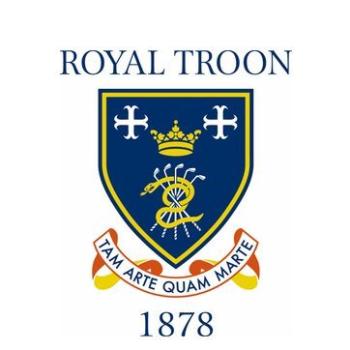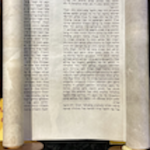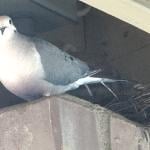This is U.S. Open week, and pro golfer Payne Stewart will be warmly remembered. The tournament is being held in Pinehurst, North Caroline, at Pinehurst No. 2, one of the world’s most celebrated championship golf courses. It was designed by the famous golf course architect Donald Ross. Payne won the U.S. Open there the last time that prestigious tournament was held there, in 1999. It was his last tournament win, and he did it in style. Some of the top pros in the world were in the hunt that last nine holes, including Tiger Woods, Phil Mickelson, and Vijay Singh. Stewart defeated Phil Mickelson by one stroke.
Payne Stewart was a blond, handsome, charming, fun-loving guy who stood six feet tall. He was married to beautiful, blond Tracey from Australia. They had two children, and they lived in Orlando, Florida. Payne and Tracey had met at a golf tournament in Malaysia in 1980.
Payne won eleven PGA Tour tournaments, with three of them being major championships (1989 PGA, 1991 and 1999 U.S. Open). For many years, he was one of the top five or ten players on the Tour. At the time of his death, Payne Stewart was third on the All Time Money List of the PGA Tour and tenth in the Sony World Rankings. He competed for the U.S. in five Ryder Cups. He was known for being an ultra-patriotic American. He once said of the European Ryder Cup team, “they should be caddying for us.”
Payne Stewart’s trademark was wearing colorful golf knickers. Those are weird-looking pants that golfers used to sport a century or more ago. They end just below the knee and tuck inside long socks. He also wore Ivy caps. During his career on the PGA Tour, Payne was the only pro who wore knickers, and he wore them all the time. I guess no one else had the nerve to do so.
Payne Stewart is much known for having suffered perhaps the most tragic, fatal, plane accident in modern American pro sports history. It happened at age 42, four months after his U.S. Open win at Pinehurst. He was flying with five other men in a chartered Learjet from Orlando to Dallas, Texas. Steward was scheduled there to meet with people to discuss the construction of a new golf course for his college alma mater in Dallas–Southern Methodist University. Then he was scheduled to play that week the season-ending Tour Championship in Houston. After the tragedy his name Payne, for him, almost seems prophetic.
The plane was cruising on auto-pilot at full altitude when it lost cabin pressure. It then flew almost four hours in a straight line for 1,500 miles over much of the U.S. Not long after takeoff, it had been suspected that something was wrong. So, the U.S. Air Force scrambled some of its F-16 fighter jets to intercept the distressed craft. As those pilots flew close to the Learjet, they observed frost or condensation on the windows. So, they couldn’t see inside the cockpit. After they followed it for hours, Stewart’s chartered jet ran out of petrol and nose-dived to earth. It crashed on a farm near Mina, South Dakota.
There never was contact between the pilot and any flight towers or the F-16s after Stewart’s plane had been flying for less than an hour. Investigators think all persons on board became incapacitated due to a quick loss of oxygen. The tragedy was big national news that day. The television media constantly showed video of Stewart’s flying plane taken by the F-16 pilots.
Investigators surmised that all persons on board became incapacitated due to a quick loss of oxygen. Tracy and the family of Stewart’s business manager who was on board, Robert Fraley, sued Sunjet who furnished the pilot and Learjet. The maintenance schedule of the aircraft had not been following properly. They claimed that a cracked adapter resulted in an airflow valve detachment. They withdrew the lawsuit.
Just about everyone liked Payne Stewart. He was known for being a prankster who constantly joked around and occasionally drank too much. So, he liked to party. They say it sometimes included chasing women.
At home in Orlando, Tracey and their two children attended the First Baptist Church. Tracey had been praying diligently for her beloved husband. Eventually, God got Payne’s attention. During his time at home, he started attending men’s gatherings there at the church. Some of his close friends on the PGA Tour, such as Paul Azinger, were Christians and attended the PGA Tour Bible Study. Then Payne became a born-again Christian.
Payne Stewart leaped into Christianity just like with everything he did–ALL-IN. He was talking to anybody who would listen to him about his faith commitment to Jesus. Even though he got very serious about it, he still had that infectious, bright-shining smile. His friends who knew him best, during both his BC years and Christian years, say it really changed Payne’s life for the better. They say he was becoming quite a testimony to Jesus his Lord. In fact, he soon started wearing one of those bracelets that said, “WWJD,” meaning “What Would Jesus Do.”
Then he was gone. Widowed Tracey and the children lost someone who was becoming a great husband and a terrific dad. It was so hard to take. The two children, Chelsea and Aaron, now are college-educated and have started their careers. Mon Tracey, although distraught, wrote a bestselling book about it with the help of two authors. The book is entitled Payne Stewart: The Authorized Biography.
Payne Stewart was a U.S. Open pro golfer. That means that his game obviously fit that tournament. It is notorious for narrow fairways, deep rough, and lightning-fast greens. Stewart won two U.S. Opens and let another one get away. It was the 1998 U.S. Open, the year prior to his win at Pinehurst. It was held at the famed and picturesque Olympic Club at San Francisco. Payne had squandered a four-shot lead the final round to lose to Lee Janzen by one stroke. It was a bitter loss that was hard to take. The next year, when he won at Pinehurst, his caddy says Payne was expressionless and didn’t say five words to him during that last round. That was so uncharacteristic of the fun-loving Payne Stewart.
Of course, Tracey often reminisces, sometimes about Payne playing in golf tournaments. She says when he won at Pinehurst, and she finally broke through the excited crowds to him on the eighteenth green, he said to her, “I did it, Lovey. I kept my head down all day, I did it.” She then said, “I know you did, love.”
In a USA TODAY article published today, Paul Azinger, twelve-time winner on the PGA Tour, says he met Payne Stewart at the 1982 Magnolia Classic at Hattiesburg, Mississippi. That tournament was held for many years during Masters week for PGA Tour pros who didn’t get in the Masters. I played there that week. I had just met Paul, and I hung out for a few minutes with him and his wife at their motorhome they used to have in their early days on Tour. I don’t remember if I saw Payne Stewart that week. It was his first year on the PGA Tour and my last year full-time.
A few years later I played in a PGA Tour tournament one time with Payne Stewart. It was the Memphis Classic in Memphis, Tennessee. I don’t remember what year it was, but it was during the middle or late 1980s. I was no longer playing full-time on the Tour, only am occasional tournament. We played together the third round, on Saturday. I recall Payne making a positive comment to me about my golf swing and game. He obviously didn’t hold back compliments.
Payne Stewart was also known for having one of the prettiest and best golf swings on Tour. He had one of those golf swings that are called “poetry-in-motion.” With his driver, he noticeably swung the club back past parallel on his backswing with considerable amount of wrist cock. So, he had a long backswing and therefore hit the ball a fairly long distance for his size. The thing I liked best about his swing was how he kept his upper body, and thus his head, centered while allowing for a noticeable weight shift even though he usually took a rather narrow stance. Thus, his head didn’t bob around. As a golf swing analyst myself, that’s the first thing I look for in a golf swing. That allowed Payne to make solid contact with the ball more often than with most of his peers.
And when Payne Stewart would make a lengthy putt or hit a great shot, he was known for his after-shot body gyrations. The result was some very photo-genic pictures with him dressed in his colorful clothes and knickers. Such pictures often made the front page in the sport section of the newspapers. One of the best was when he made that 15-foot putt on the eighteenth green at Pinehurst to win his last tournament. This week during the U.S. Open, we’ll be seeing on TV that picture of him a lot, jumping in the air after the ball went in the hole. The American PGA Tour, the United States Golf Association, and many golf fans will be remembering Payne Stewart a lot this week at Pinehurst during the U.S. Open, and he will be sorely missed.












